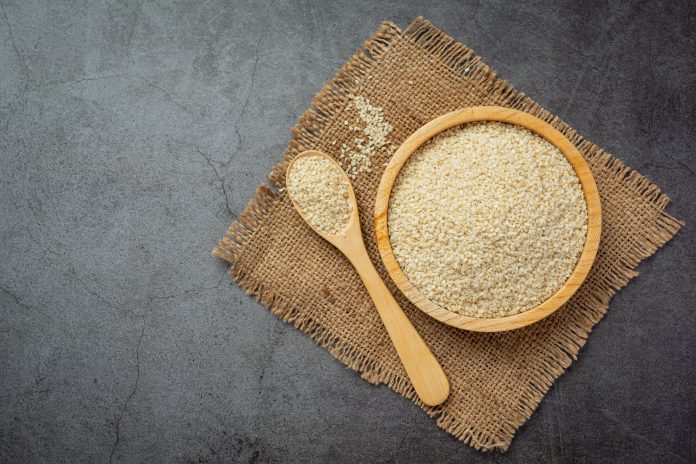Kodo millet, also known as Kodra in Hindi, is a nutritious grain that has been cultivated in India for thousands of years. Here are the top 10 health benefits of Kodo Millet:

PC: Freepik
Here are some more detailed points on the health benefits of Kodo Millet:
- High in Fiber: Kodo millet is a good source of both soluble and insoluble fiber. Soluble fiber helps to slow down the digestion process and regulate blood sugar levels, while insoluble fiber adds bulk to the stool and promotes regular bowel movements. This helps to prevent constipation and keep the digestive system healthy.
- Lowers Cholesterol: Kodo millet is rich in phytochemicals and antioxidants, such as phenolic acids, flavonoids, and lignans, which have cholesterol-lowering properties. These compounds bind to bile acids in the intestine and prevent their reabsorption, which forces the liver to use up more cholesterol to produce more bile. As a result, the levels of bad cholesterol (LDL) in the blood decrease, reducing the risk of heart diseases.
- Gluten-Free: Kodo millet is a gluten-free grain, which means it is safe to eat for people with celiac disease, gluten intolerance, or wheat allergy. It is also a good alternative for those who want to reduce their gluten intake or follow a gluten-free diet for other health reasons.
- Regulates Blood Sugar: Kodo millet has a low glycemic index (GI), which means it is digested and absorbed slowly by the body, leading to a gradual rise in blood sugar levels instead of a sudden spike. This makes it a good choice for people with diabetes who need to control their blood sugar levels. Kodo millet also contains magnesium, a mineral that improves insulin sensitivity and helps the body use glucose more efficiently.
- Rich in Protein: Kodo millet is a good source of plant-based protein, containing about 8 grams of protein per 100 grams of cooked millet. This makes it a valuable food for vegetarians and vegans who may have a harder time meeting their daily protein requirements. Protein is essential for building and repairing tissues, enzymes, and hormones.
- Packed with Vitamins: Kodo millet is rich in vitamins B1 (thiamine), B3 (niacin), and B6 (pyridoxine), which are involved in energy metabolism, nerve function, and the production of red blood cells. It also contains vitamin E, an antioxidant that protects cells from oxidative damage and supports skin and immune health.
- Aids Weight Loss: Kodo millet is a low-calorie, low-fat, and low-glycemic food that helps to keep you full and satisfied for longer. This can lead to reduced calorie intake and weight loss over time. Kodo millet also has a low energy density, meaning it contains fewer calories per gram of food, which is associated with lower body weight.
- Anti-Inflammatory: Kodo millet has anti-inflammatory properties due to its high content of polyphenols and flavonoids. These compounds help to reduce inflammation in the body by scavenging free radicals and inhibiting the production of pro-inflammatory cytokines. Chronic inflammation is a risk factor for many diseases, including cancer, diabetes, and heart disease.
- Boosts Immunity: Kodo millet is a good source of antioxidants, such as quercetin and ferulic acid, which help to neutralize harmful free radicals and prevent oxidative stress. This can boost the immune system and reduce the risk of infections and diseases. Kodo millet also contains zinc, a mineral that plays a role in immune function and wound healing.
- Good for Bone Health: Kodo millet is a good source of calcium, a mineral that is essential for building and maintaining strong bones and teeth. Calcium also plays a role in muscle function, nerve transmission, and blood clotting.

PC: Freepik
Kodo millet can be cooked in a similar way to rice, and it can be used in a variety of dishes such as porridge, pilaf, and salads. Here are the steps to cook Kodo millet:
- Rinse the Kodo millet in a fine-mesh strainer under cold running water to remove any debris and dust.
- Soak the millet in enough water to cover it for at least 30 minutes. This helps to soften the grain and reduce the cooking time.
- Drain the soaked millet and transfer it to a medium-sized pot.
- Add 2 cups of water or broth for every cup of Kodo millet. You can also add salt, herbs, or spices to flavor the millet.
- Bring the water to a boil over high heat, then reduce the heat to low and cover the pot with a lid.
- Simmer the millet for about 20-25 minutes, or until all the liquid is absorbed and the grains are tender. You can check the millet halfway through the cooking process to make sure it is not sticking to the bottom of the pot or burning.
- Once the millet is cooked, turn off the heat and let it rest for a few minutes before fluffing it with a fork.
- Serve the cooked Kodo millet as a side dish or use it as a base for a salad or a stir-fry.
Note: The water to millet ratio and the cooking time may vary depending on the quality and age of the millet. It’s best to follow the package instructions or experiment with different ratios and cooking times until you find the one that works best for you.






